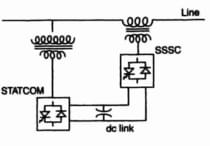 |
| Digital Electronics MCQs |
1. For which of following flip-flops, the output is clearly defined for all combinations of to inputs?
a. D flip-flop
b. J-K flip-flop
c. R-S flip-flop
d. None of these
2. What J-K input condition will always set Q+ upon the occurrence of the active clock transition?
a. J = 1, K = 0
b. J = 1, K = 1
c. J = 0, K = 1
d. J = 0, K = 0
3. In a J-K flip-flop, toggle means___.
a. Change the output to the opposite state
b. Set Q = 1 and Q(bar) = 0
c. Set Q = 0 and Q(bar) = 1
d. No change in the input
4. The output of S-R flip-flop when S = 1, R = 0 is______.
a. High impedance
b. No change
c. High
d. Low
5. Assertion(A): An unlocked flip-flop is called a latch.
Reason(R): A latch is constructed using two cross-coupled NAND gates or NOR gates.
a. A is false but R is true
b. A is true but R is false
c. Both A ad R are true but R is not the correct explanation of A
d. Both A and R are true but R is the correct explanation of A
6. Race around condition always arise in a______.
a. Digital circuit
b. Synchronous circuit
c. Asynchronous circuit
d. Combinational circuit
7. A T-flip-flop can be made from a J-K flip-flop by using______.
a. An OR gate
b. A AND gate
c. An XOR gate
d, None of these
8. The J-K master-slave flip-flop is different from the S-R flip-flop (Both made with NAND gates)
in that, it has_____.
a. A much shorter delay
b. A valid output when both inputs are 1
c. No need of a clock
d. No race around condition
9. In a clocked S_R flip-flop made with NAND gates, the input combination S = 1, R = 1, is not permitted because it leads to_____.
a. The output becoming available before the clock goes low
b. An unpredictable output when the inputs become zero
c. Both the outputs being zero simultaneously
d. A race around condition







0 Comments
If you have any doubt, feel free to ask.